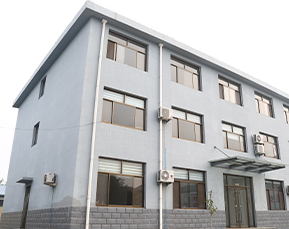 Afrikaans
Afrikaans  Albanian
Albanian  Amharic
Amharic  Arabic
Arabic  Armenian
Armenian  Azerbaijani
Azerbaijani  Basque
Basque  Belarusian
Belarusian  Bengali
Bengali  Bosnian
Bosnian  Bulgarian
Bulgarian  Catalan
Catalan  Cebuano
Cebuano  Corsican
Corsican  Croatian
Croatian  Czech
Czech  Danish
Danish  Dutch
Dutch  English
English  Esperanto
Esperanto  Estonian
Estonian  Finnish
Finnish  French
French  Frisian
Frisian  Galician
Galician  Georgian
Georgian  German
German  Greek
Greek  Gujarati
Gujarati  Haitian Creole
Haitian Creole  hausa
hausa  hawaiian
hawaiian  Hebrew
Hebrew  Hindi
Hindi  Miao
Miao  Hungarian
Hungarian  Icelandic
Icelandic  igbo
igbo  Indonesian
Indonesian  irish
irish  Italian
Italian  Japanese
Japanese  Javanese
Javanese  Kannada
Kannada  kazakh
kazakh  Khmer
Khmer  Rwandese
Rwandese  Korean
Korean  Kurdish
Kurdish  Kyrgyz
Kyrgyz  Lao
Lao  Latin
Latin  Latvian
Latvian  Lithuanian
Lithuanian  Luxembourgish
Luxembourgish  Macedonian
Macedonian  Malgashi
Malgashi  Malay
Malay  Malayalam
Malayalam  Maltese
Maltese  Maori
Maori  Marathi
Marathi  Mongolian
Mongolian  Myanmar
Myanmar  Nepali
Nepali  Norwegian
Norwegian  Norwegian
Norwegian  Occitan
Occitan  Pashto
Pashto  Persian
Persian  Polish
Polish  Portuguese
Portuguese  Punjabi
Punjabi  Romanian
Romanian  Russian
Russian  Samoan
Samoan  Scottish Gaelic
Scottish Gaelic  Serbian
Serbian  Sesotho
Sesotho  Shona
Shona  Sindhi
Sindhi  Sinhala
Sinhala  Slovak
Slovak  Slovenian
Slovenian  Somali
Somali  Spanish
Spanish  Sundanese
Sundanese  Swahili
Swahili  Swedish
Swedish  Tagalog
Tagalog  Tajik
Tajik  Tamil
Tamil  Tatar
Tatar  Telugu
Telugu  Thai
Thai  Turkish
Turkish  Turkmen
Turkmen  Ukrainian
Ukrainian  Urdu
Urdu  Uighur
Uighur  Uzbek
Uzbek  Vietnamese
Vietnamese  Welsh
Welsh  Bantu
Bantu  Yiddish
Yiddish  Yoruba
Yoruba  Zulu
Zulu High-Quality Conveyor Roller Pulleys for Efficient Material Handling
The Importance of Conveyor Roller Pulleys in Modern Industry
Conveyor systems are integral to a wide range of industries, facilitating the efficient movement of goods and materials. Among the crucial components of these systems are conveyor roller pulleys, which play a vital role in ensuring the smooth and effective operation of conveyors. This article delves into the significance, types, and applications of conveyor roller pulleys in the modern industrial landscape.
Conveyor roller pulleys, often referred to simply as pulleys, serve as a key part of a conveyor system. They are installed at the ends of conveyor belts, helping to maintain belt tension, provide support, and facilitate smooth movement of the belt. Pulleys come in various types, including drive pulleys, return pulleys, and tail pulleys, each designed to perform specific functions within the conveyor system.
Drive pulleys are essential as they are powered by motors, generating the force needed to move the belt. They typically feature a rugged design to withstand the stresses of constant operation and heavy loads. On the other hand, return pulleys are located at the opposite end of the conveyor and support the return travel of the belt, ensuring that it is correctly aligned and that wear is minimized. Tail pulleys, meanwhile, are installed at the conveyor's end to redirect the belt back to the drive pulley, completing the circuit and facilitating continuous operation.
The selection of the right conveyor roller pulley is critical for optimizing system performance. Factors such as the weight of materials being transported, the speed of the conveyor, and the specific operating conditions must all be taken into account when choosing pulleys. High-quality pulleys made from durable materials can significantly enhance the lifespan and efficiency of conveyor systems, reducing downtime and maintenance costs.
conveyor roller pulley

In addition to their mechanical importance, conveyor roller pulleys also contribute to safety in industrial settings
. A well-designed pulley system minimizes the risk of belt slippage and misalignment, which can lead to accidents and equipment damage. Regular maintenance and inspections of pulleys are essential to ensure they continue to function effectively, preventing potential hazards associated with worn or damaged components.The applications of conveyor roller pulleys are vast and varied. They can be found in manufacturing facilities, warehouses, distribution centers, and mining operations, among other sectors. In each application, the efficiency gained by using a reliable conveyor system powered by quality roller pulleys translates to improved productivity and reduced operational costs.
As industries continue to innovate and seek ways to improve efficiency, the role of conveyor roller pulleys will only grow more prominent. Advances in materials science and engineering are likely to yield even more robust and efficient pulley designs, further enhancing the capabilities of conveyor systems.
In conclusion, conveyor roller pulleys are essential components that underpin the efficiency and functionality of conveyor systems in various industries. Their ability to support, drive, and guide conveyor belts allows for the seamless movement of goods and materials, making them indispensable in modern industrial operations. Investing in high-quality pulleys and ensuring regular maintenance will yield significant benefits in terms of productivity, safety, and overall operational efficiency.
-
Wing Pulley Conveyor for Conveyor Belt MaintenanceNewsJun.16,2025
-
Self Cleaning Spiral Idler for Conveyor DesignNewsJun.16,2025
-
Pulley Lagging for Conveyor Belt AlignmentNewsJun.16,2025
-
Impact Idlers Used in Belt Conveyor for PerformanceNewsJun.16,2025
-
Ceramic Lagging Conveyor Pulley for Conveyor Belt SystemsNewsJun.16,2025
-
Belt Conveyor Idler for Heavy-Duty ApplicationsNewsJun.16,2025





























